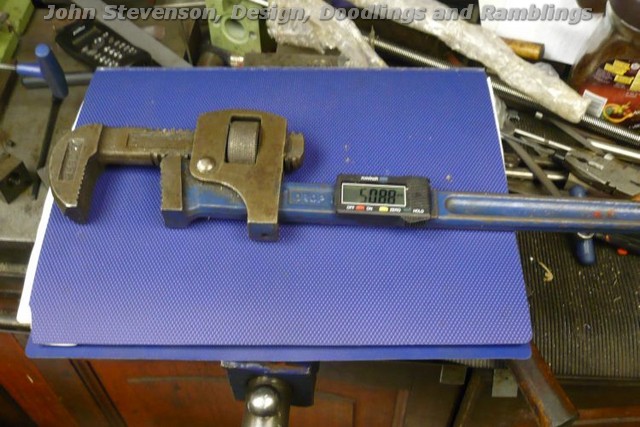Yes,I do know what the artical says, But it also doesn't say what accuracys you can resonablly expect. And as I mentioned, Far too many think because there's all those zeros after the decimal point, Then anything digital has to be really accurate no matter how cheap it is to buy. And nowhere does it mention or warn against destroying any value that's left on all those finely built Vernier Gages. There's a lot of those older height gages around now at fairly cheap prices, And yes a cheap one was used in that artical. Personaly I'd hate to see that type of work done on some of these old but fine tools due to inexperience and thinking it's a great idea to do so. If you do know your going to destroy a tools value and still chose to do so? That's fine, But a bit illogical to me.
And I'd also agree that very accurate digital equipment can be bought today that is extremly accurate. But not normaly at a price most of us would be happy to pay. I know exactly how much it hurt to buy my 12" digital Mitutoyo, And it's repeatable accuracy. But I also have a very good set of gage blocks that do allow accurate checks to be done. So if and when it's rarely required, I can use my height gage for accurate measurements beyond the inaccuracys of the tool itself.
Industry has gone to digital equipment for many reasons, Less mistakes, speed of measurements, ease of usage would be just 3.That's also why I've bought some digital equipment. LOL, Due to age and not needing that magnifying glass is really nice too.
I guess the main reason I started this thread was it cost me far too much to lean the little I do know the hard way. I wouldn't like to see anyone else have to do the same. Maybe I'm wrong, But I still happen to think forums like these are or should be where the more experienced can help to educate the less experienced. And since this sub forum is for anything in MEW. I figured this was the correct place to add what I thought was missed in that artical. Overall I do think it was well done. It's just that it missed those important points.
And as usual, John Stevenson is 100% correct, But that's another reason I bought good gage blocks. I can calibrate and check my own equipment so they all agree with each other. Maybe not to National recognised standards. But my gage blocks are my standards. Yearly metrology lab recertification probably isn't needed by the vast majority here either. Being within a few thou is more than good enough for almost anything most including myself will normaly need to do.
But If this thread helps even one person to understand the value of some of the older tooling and the difference between resolution and accuracy, Then it will have been worth it IMO.
Pete
 Nicholas Farr.
Nicholas Farr.




